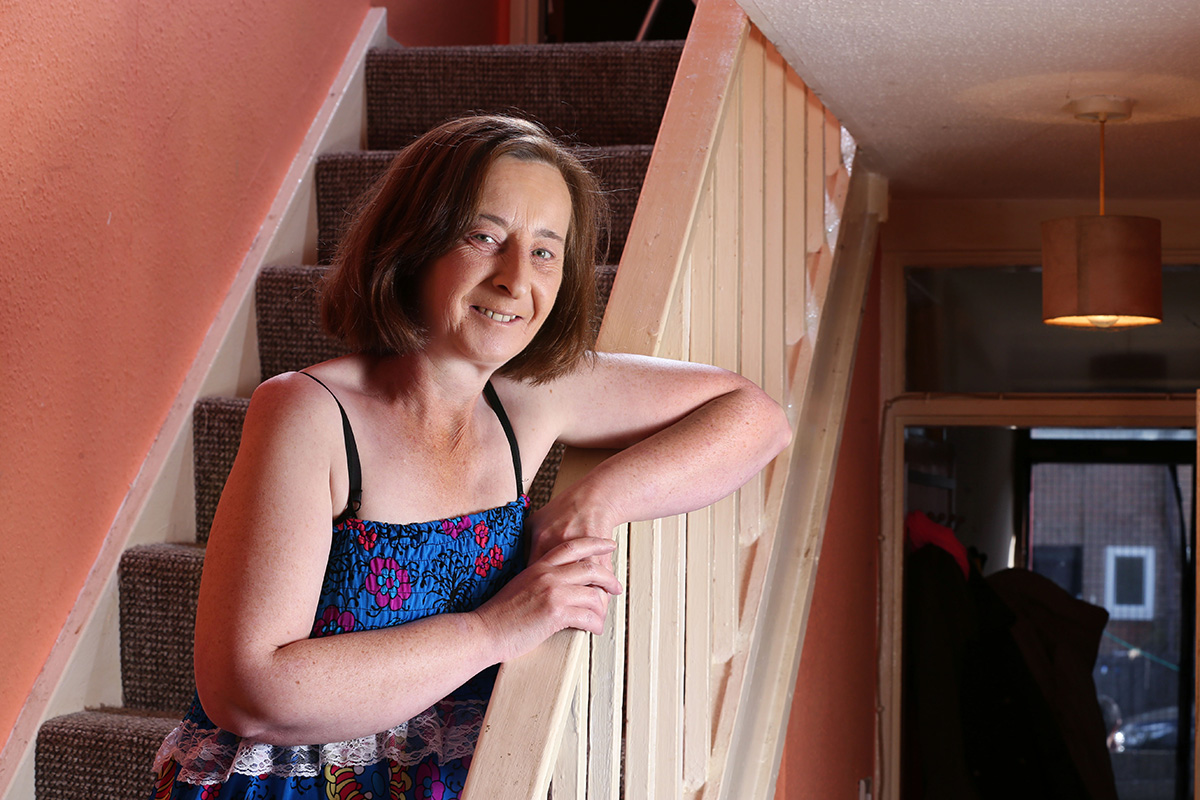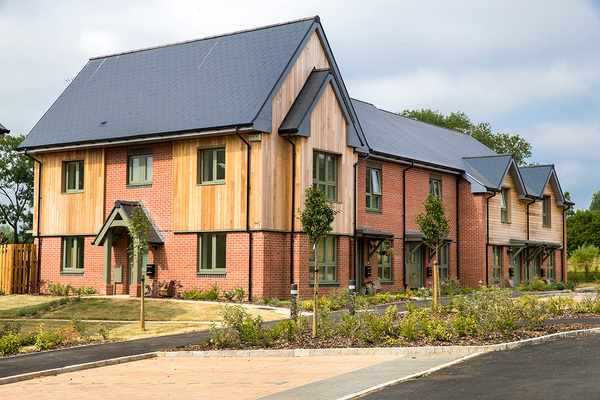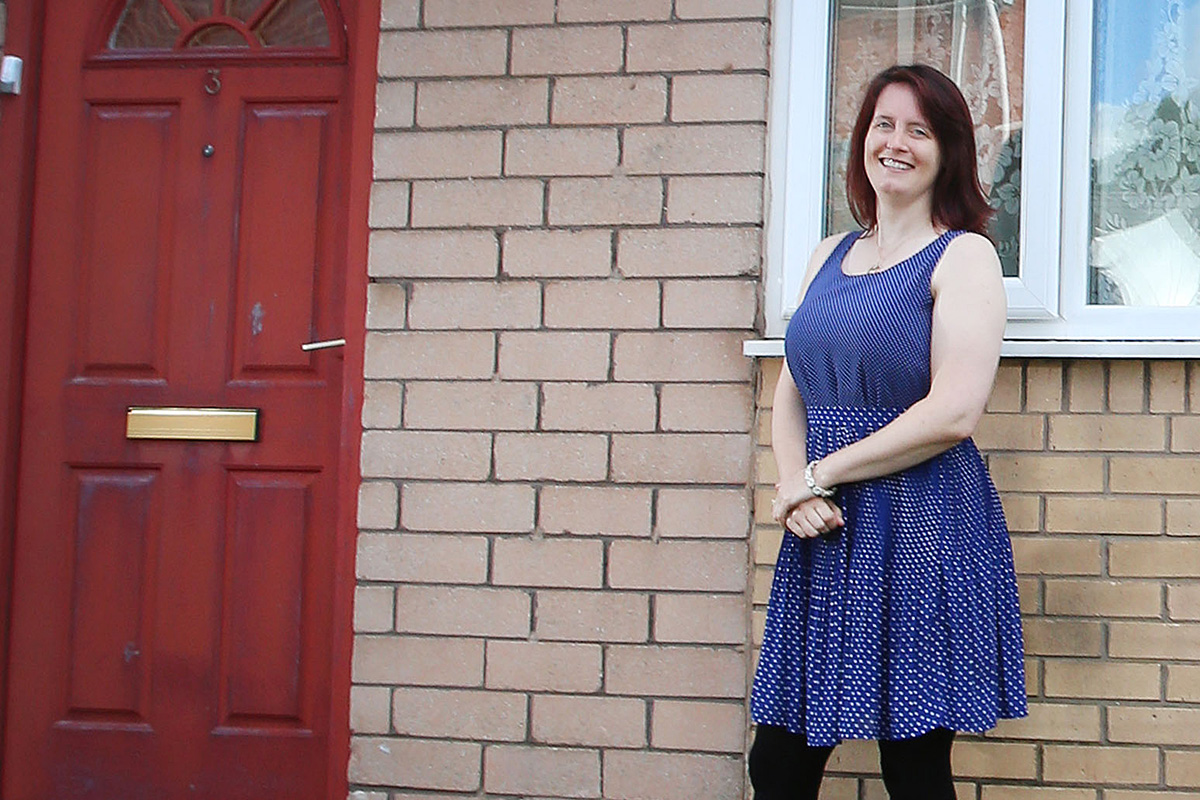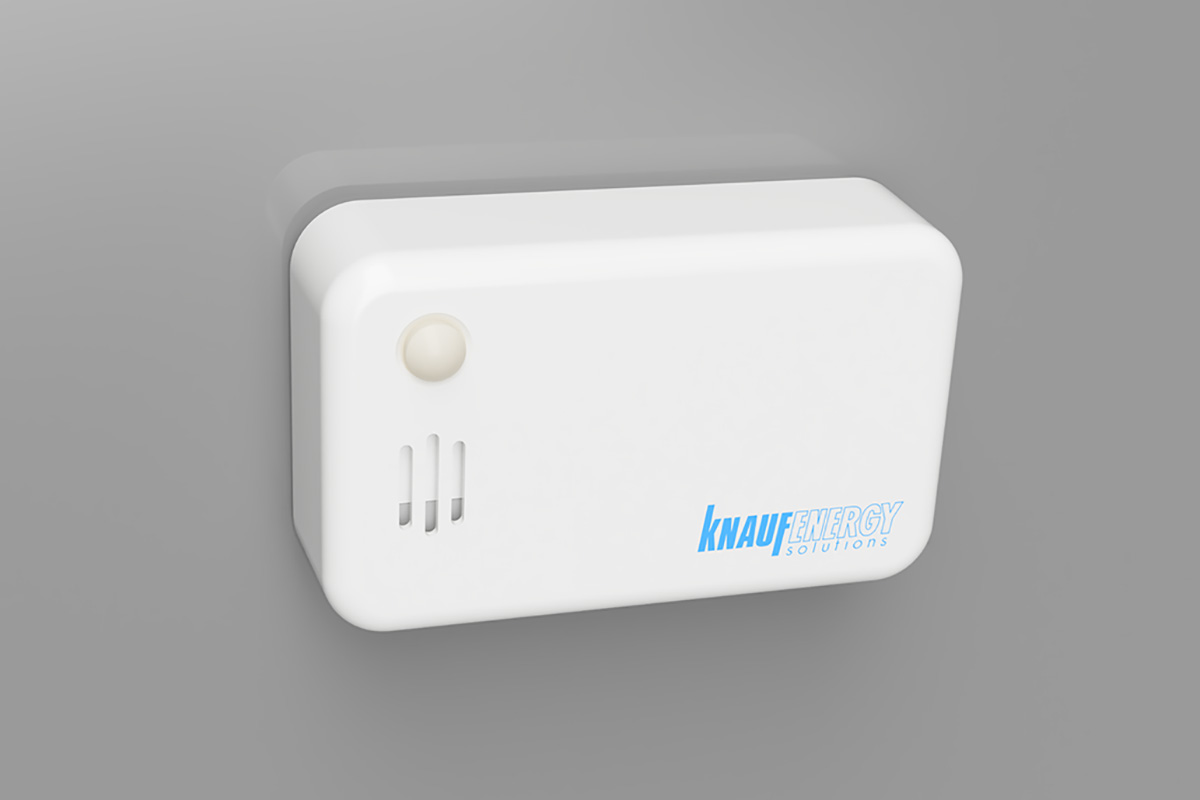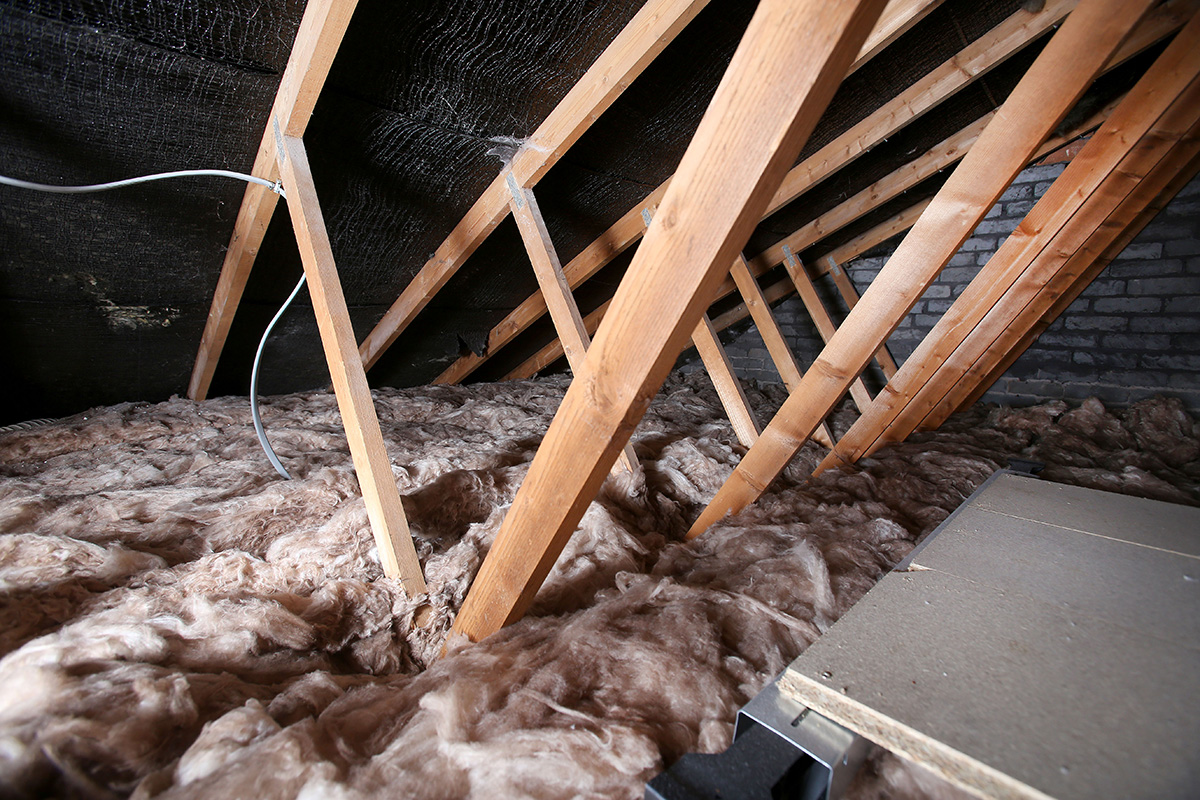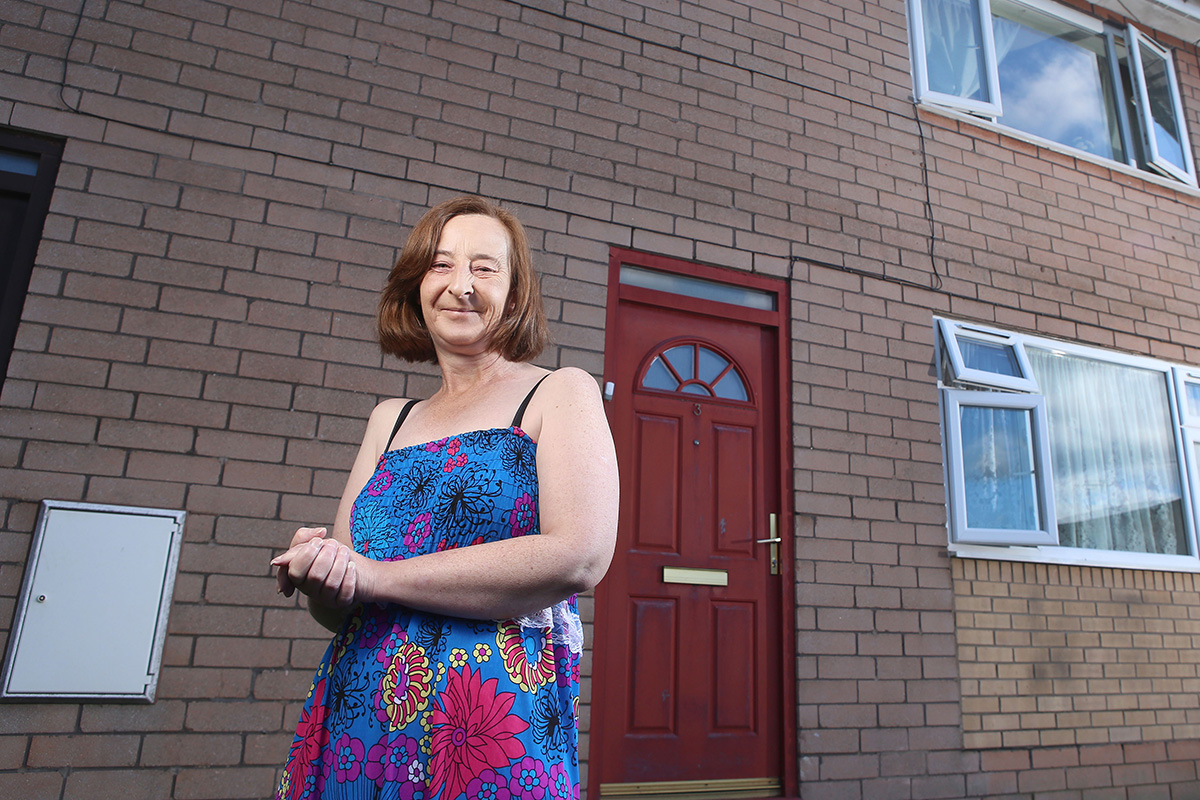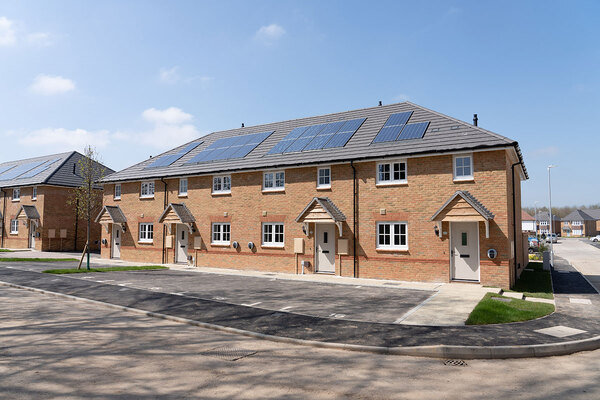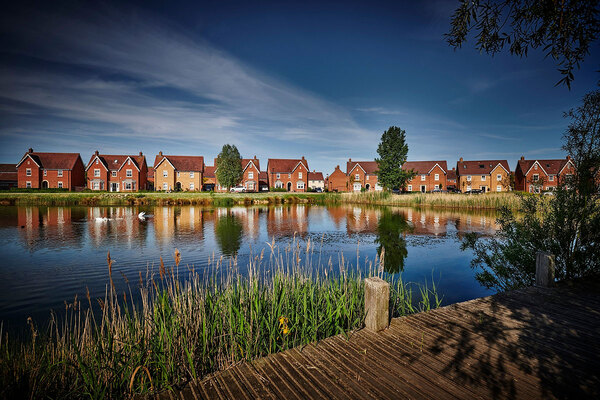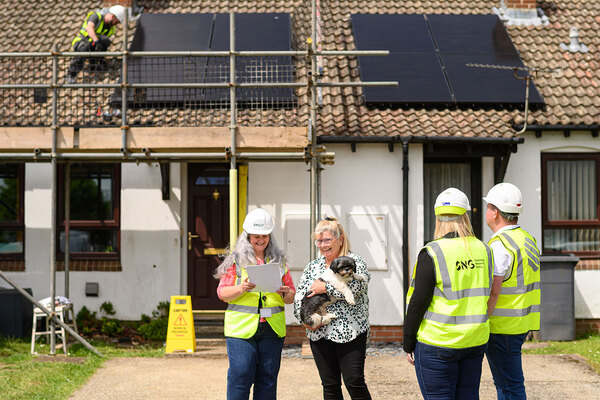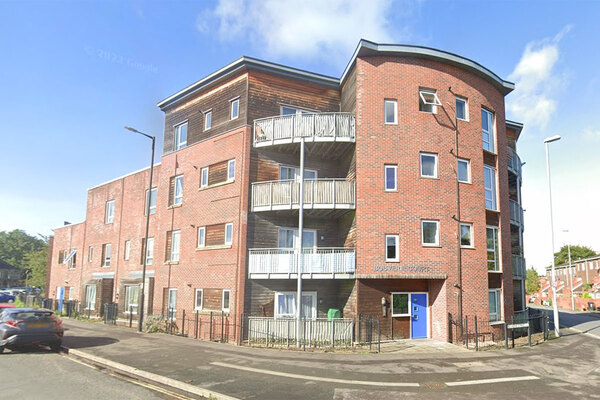You are viewing 1 of your 1 free articles
Measure twice, retrofit once: how an experiment in Manchester aims to improve energy efficiency renovations
As social landlords embark on major works to improve the energy efficiency of their homes, how do they know the measures installed are working? Kate Youde reports on a pilot project that aimed to find out. Photography by Lorne Campbell/Guzelian
Carol Valentine (above) used to have to wear extra layers or a thick dressing gown to keep warm in her “really cold” home of 22 years. But she is expecting this winter to be cosier, now that her landlord Great Places has installed new insulation in her loft. “You can really feel the difference,” Ms Valentine says.
Her two-bedroom terraced house, which she shares with her son, was one of 28 homes on the Stretford Road estate in Manchester renovated in a pilot run by the association and manufacturer Knauf Insulation. The aim of the trial was to show the actual improvement in energy performance resulting from retrofit, by installing monitoring devices in properties.
“At the moment the Energy Performance Certificate (EPC) is offering a fictional description of a home’s performance"
Housing is responsible for around a quarter of carbon emissions in the UK. As a result, social landlords will be investing significant sums to decarbonise their stock in the coming years. That means that it is going to be ever more important to know that renovations carried out with the aim of cutting emissions actually do the job. So what did the trial find – and could other associations benefit from the learning?
“At the moment the Energy Performance Certificate (EPC) is offering a fictional description of a home’s performance,” says Steven Heath, technical and strategy director at Knauf Insulation Northern Europe.
EPCs are used to rate the energy efficiency of buildings on an A-G scale, with A being the highest rating. The calculation is based on the Standard Assessment Procedure (SAP), which assesses how much energy a home will consume using standardised assumptions about occupancy and behaviour, with existing homes assessed using the Reduced Data SAP (RdSAP).
As part of its targets to reduce carbon emissions, Great Places aims to get as many of its 24,000 homes as “practically and financially possible” to an EPC of D by 2021, says its environmental manager Sarah McClelland, and to a C by 2028. The homes on Stretford Road were built between 1972 and 1980, and ahead of the pilot were rated high Es or low Ds.
“On paper, they hit our internal targets, but in reality we were getting phone calls of complaints saying the customers were struggling to heat their homes,” Ms McClelland says. “We even had an MP letter saying, ‘What are you going to do about this housing?’ So we realised that while on paper they looked like they were insulated, maybe in reality things weren’t working as well as they could have been.”
Suspecting that the cavity wall insulation installed by another company at the time of construction was failing, the association worked with Knauf Insulation to identify issues. They also found problems with loft insulation, which had sometimes been removed to install cabling and was not put back properly.
Wanting to test its new technology for measuring return on investment on refurbishment, Knauf Insulation paid more than £200,000 for new cavity wall, party wall and loft insulation for 28 homes on the estate, as well as pre and post-work monitoring.
Great Places invested more than £30,000 in remedial work ahead of the refurbishment, including the removal of existing cavity wall insulation and rubble found around door and window frames, repointing and repairs to guttering.
Knauf Insulation installed sensor devices – which measure how well a building’s walls, roof, windows and doors retain heat – in 28 homes to measure the effectiveness of the work. For 12 of the homes, these sensors were used to measure the performance of the home for 12 weeks before the improvements were carried out, and then the results compared after the work was done, to see how much of an improvement had been made. The technology records data such as the internal temperature, CO2 emissions and energy consumption, and sends it to the cloud, where an algorithm calculates the speed at which heat leaks out.
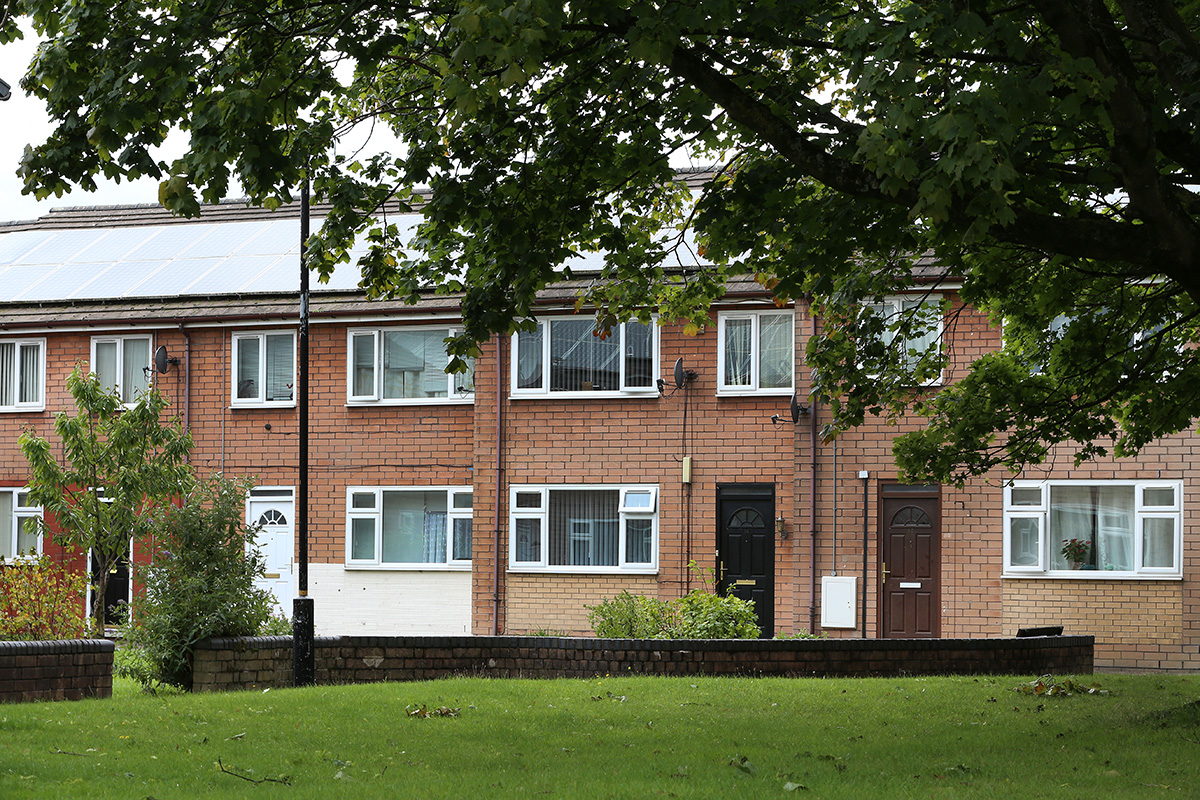
After the retrofit work was finished, the company repeated the exercise for another 12 weeks between December 2019 and March 2020, to find out how effective the works had been.
The results showed that the energy efficiency of the homes, which had electric heating installed, improved by 31% on average, reducing annual heating bills by a projected £411 (see box: Energy savings).
Ms Valentine, who has a pre-payment meter, says she is putting in the same amount of money as before the improvements, although Knauf Insulation predicts a 36% reduction in energy demand for her home. Mr Heath says it is likely that Ms Valentine’s meter spend relates to use of other electrical items, such as lighting and televisions, or that she is able to enjoy a warmer home for the same cost.
The manufacturer is now exploring a separate pilot of its technology with another housing association in 100 new build homes, and is looking to bring its sister company Knauf Energy Solutions’ quality control and measurement service – charged in Belgium at €3,500 per property not including retrofit work – to the UK.
Sarah McClelland, environmental manager at Great Places Housing Group
Mr Heath says the device is a “huge game changer” for net zero carbon ambitions, and could help landlords manage future repair and maintenance budgets.
From Great Places’ perspective, Ms McClelland says it has been “really beneficial” to have specific property data and that the project revealed that SAP “is not the best way to calculate the energy performance”.
“Because these homes were theoretically already insulated, the SAP score hasn’t [necessarily] been increased, or EPCs haven’t gone up, but we can see from the monitoring the improvements to our customers,” she says. The homes are all rated D now.
Concern about the use of SAP ratings and EPCs to guide decision-making has been long percolating in the sector. Derek Watters, head of environmental sustainability at 197,700-home Places for People, says that SAP is “not the tool for zero carbon” because it neither forecasts future energy costs nor factors in the future decarbonisation of the grid as the country increasingly gets power from renewable sources.
Hyde Housing has a target to achieve an EPC band C rating on all its 50,000 homes by 2030, which will mean improving the insulation in about 10,800 properties. The association calculates that getting all homes to that standard will reduce their tenants’ bills by an average of £140.
Neal Ackcral, chief property officer at Hyde, argues that the EPC and RdSAP data does reflects the savings achieved by tenants.
However, the housing association is also seeking to measure the difference in well-being for customers. “We can see the link between health and an affordable, heated home and we are exploring how to monitor that in a meaningful way,” he says.
Loft insulation at Great Places and Knauf Insulation’s pilot project
Hyde is part of a zero carbon sub-group run by the G15 group of London’s largest housing associations, which is looking at strategies for energy efficiency and sustainability. Hyde is also establishing a partnership with five national landlords on a yet-to-be-announced project exploring future methods for measuring energy efficiency, strategies for innovation and customer engagement.
Richard Lupo, managing director of sustainability consultancy Suss Housing, says that the impact of retrofit is “rarely” tested but that there is “potential to improve quality” if a contractor knows its work is going to be monitored properly.
He says the minimum desired outcome – in terms of cost savings to the occupant or kilowatt hours of energy saved, for example – should be written into contracts.
Carol Valentine is expecting a cosier winter
“I would urge landlords to check property for quality assurance purposes that what they are paying for is actually making a difference,” he says.
On the back of the pilot, Great Places is using a “much higher specification” for loft insulation and doing “much better quality checks” on completed work, according to Ms McClelland. She says the trial will change how the association draws up contracts for future planned retrofits in relation to quality assurance, with the details still being finalised.
Ms McClelland says it will be interesting to see what happens with the New Homes Ombudsman, who will give redress to buyers of new build properties with the power to issue awards of £50,000. Its remit will include handling complaints about fuel and energy performance.
She says that this could affect how everyone builds homes, and that the landlord will need to make sure the homes it builds and retrofits meet the designed energy performance. “Not what we think it’s going to be, but what it actually is,” she says. “And that could be the massive change for us.”
UPDATE 24.09.2020 3pm
This story has been updated to clarify the number of homes where sensors were installed, and which part of Knauf Group carried out the work. The original version of this story stated that sensors were installed in 12 homes and measurements taken before and after an energy efficiency retrofit was carried out. The story has been updated to clarify sensors were installed in 28 homes which recording the efficiency of the homes after work had been completed - however, before and after readings were only taken in 12 homes.
Sign up for the IH long read bulletin
Already have an account? Click here to manage your newsletters
